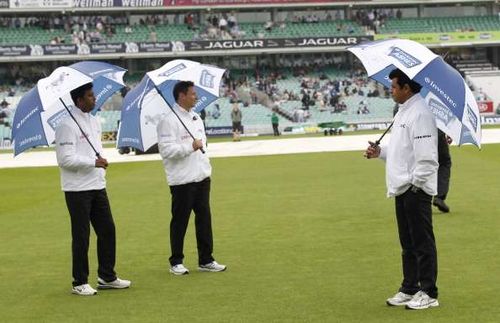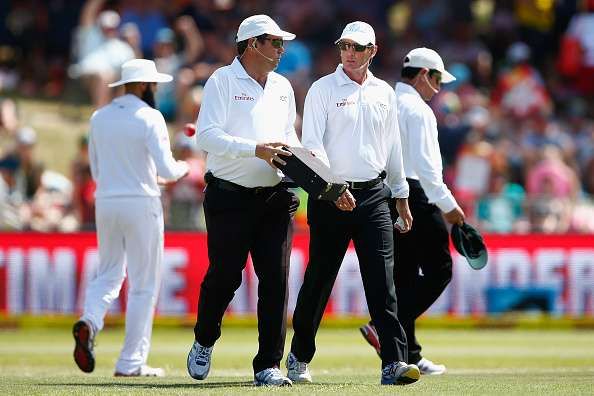
What is the role of fourth umpire in cricket?
Chris Gayle means much more to Bangalore cricket fans than he does to his national cricket board. The Bangaloreans love to watch him grace the Chinnaswamy Stadium, where he is the ultimate showman.
Therefore, when fourth umpire Ian Gould prevented Gayle from batting in a group match at Bangalore against the Lankans in the ICC WT20 2016, fans were utterly disappointed.
Umpire Gould had to stop Gayle from batting as he had left the field during West Indies’ bowling and per the stipulated rules, the latter had to wait for a specific time period before he could take the field in the West Indies innings. It is the role of the fourth umpire, an official whom most of us are unaware of, to keep a track of player substitutions and their time spent on and off the field.

Also referred to as the ‘reserve’ umpire at times, the primary function of the fourth umpire is that of acting as a stand-by to the other three umpires, the two on-field and the third umpire or the TV umpire. In case of an incident of injury or any other unavoidable reason due to which one of the on-field umpires’ has to be relieved of his duties, the third umpire takes the field in his place and the fourth umpire then fills in the shoes of the third umpire.
An injury to an on-field umpire might be the rarest thing to happen on a cricket field, but with the kind of power modern day batsmen generate with their extraordinary willows, the umpires are always in the firing line and are always at the risk of getting hurt. It is therefore not surprising to see umpires these days wearing protective gear while officiating amidst such show of firepower.
It is the duty of the fourth umpire to visit the ground one day prior to the match and ensure that the ground is fit to host the match. He coordinates with the groundsmen and makes sure that the pitch is in shape and that all other ground related activities are in accordance with the standards laid down by the ICC. He also inspects the measurement of stumps, boundary and crease markings.
When a ball is lost in the crowd or when some bowling sides complain that the ball in play is out of shape or unfit to play with, the official running in with the box of used balls is the fourth umpire. Also, in test matches, he is the one who hands the new ball to the on-field umpires after the specified 80 overs have been bowled with the old ball. Apart from this, it is his duty to guard the pitch during lunch and tea intervals and make sure that the pitch is not tampered with during such breaks.
One of the other major roles of the fourth umpire is that he is the person responsible for examining on field behavior of players and report any kind of malpractice or ill behavior of the players to the officiating match referee.
The match referee then looks into the matter and if and when he finds that the Code of Conduct laid down by the ICC is breached, he hands out punishments in the form of match fee deduction or match bans respectively. Account of over rates is also kept by the fourth umpire.
In the recently concluded Edgbaston Test versus Pakistan, England’s James Anderson was repeatedly landing his foot in the danger zone of the pitch and on-field umpire Bruce Oxenford was intimated by the fourth umpire about the same.
Thus, Anderson was handed out warnings which later made him say, “I wasn’t convinced that I had [run on the pitch], but Bruce had the third or fourth umpire in his ear telling him I was.” The fourth umpire has to be vigilant enough to spot any tampering of the pitch that may be against the rules of the sport and which may not come to the notice of the officiating on-field umpires. Not just this, the fourth umpire is also the official approached in case players are unhappy with decisions made on the field.
In the first qualifier of the 2016 edition of the Indian Premier League, Royal Challengers Bangalore was fighting hard to win the contest against the Gujarat Lions when umpire Anil Chaudhary wrongly adjudged RCB batsman Stuart Binny LBW.
RCB captain Virat Kohli is known to wear his heart on his sleeve and it was no shock seeing him show his dissatisfaction to the fourth umpire, questioning the decision of the on-field umpire. Thus the fourth umpire is a kind of mediator between the players and the other match officials.
It is very rare that we see the intervention of the fourth umpire in the proceedings of the match. They play more of a supporting background role which seldom affects the cricket match as opposed to judgments of other umpires which can turn matches on their heads.
Their role may, therefore, tends to belittle their importance to the cricket fan but their presence ensures the smooth functioning of the sport. Their contribution therefore, cannot be ignored.

